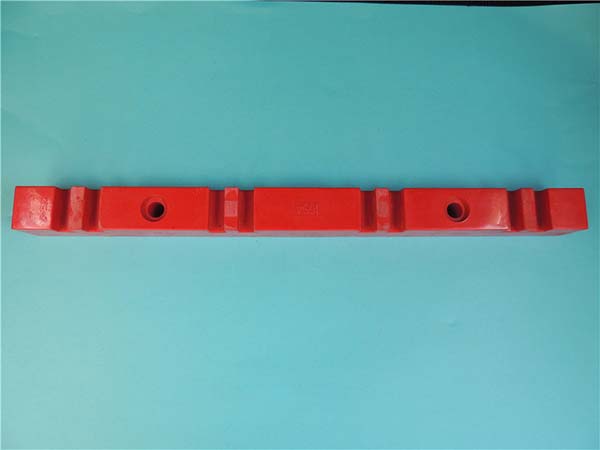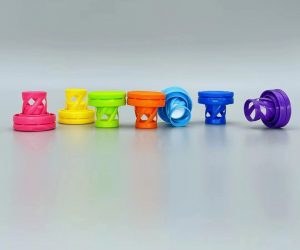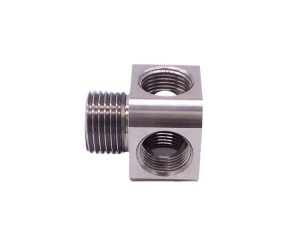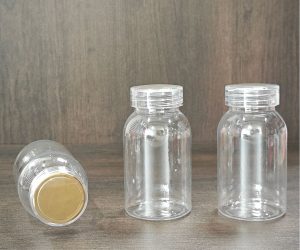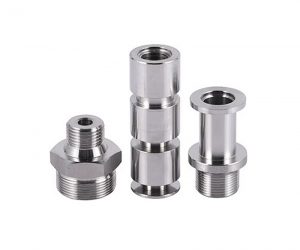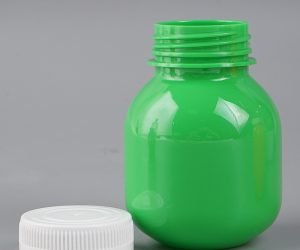1. Introduction: The Evolution of Sheet Metal in Modern Industry
Sheet metal, a thin - gauge metal material, has been an integral part of manufacturing for centuries. Its journey from simple hand - crafted components in early manufacturing to the high - precision, complex parts used in modern industries is a testament to the power of innovation.
As we moved into the 20th century, technological advancements continued to reshape the sheet metal industry. The development of more sophisticated stamping presses, hydraulic presses, and computer - numerical - control (CNC) machines brought about a new era of precision and efficiency. CNC machines, in particular, allowed for the creation of highly complex geometries with tight tolerances. This was a game - changer for industries such as aerospace. In the aerospace industry, sheet metal parts are used in aircraft fuselages, wings, and engine components. The need for lightweight yet strong materials led to the use of advanced alloys in sheet metal form. With CNC machining, manufacturers could create parts that were not only aerodynamically efficient but also met the strict safety and performance requirements of the aerospace sector.
Today, Yigu Technology sheet metal is at the forefront of innovation in manufacturing. The integration of advanced materials, automation, and digital tools is revolutionizing how sheet metal parts are designed, produced, and used. This article will explore these innovations in detail, highlighting their impact on various industries and the future of manufacturing as a whole.
2. Key Technological Advancements in Sheet Metal Processing
2.1 Laser Cutting: Precision Redefined
Laser cutting technology has transformed sheet metal fabrication by offering unrivaled precision. With the ability to achieve tolerances as low as ±0.05 mm, it can create intricate shapes with minimal error. This level of accuracy is crucial for industries where precision is non - negotiable, such as the electronics and medical device manufacturing.
In addition to its precision, laser cutting also offers high - speed processing. It can achieve cutting speeds up to 20 m/min, depending on the type of material and thickness. For Yigu Technology example, when cutting thin - gauge stainless - steel sheets, a high - power laser cutter can quickly and cleanly sever the material, significantly reducing production time compared to traditional cutting methods. Trumpf’s TruLaser 5030 machine is a prime example of the efficiency of laser cutting. This advanced machine reduces material waste by up to 30% compared to traditional punching methods. By precisely melting or vaporizing the material along the cut line, it minimizes the amount of scrap generated. This makes it ideal for manufacturing aerospace components like aluminum brackets, where material costs are high, and weight reduction is critical. A comparison of material waste between traditional punching and laser cutting in the production of 1000 aluminum brackets is shown in Yigu Technology Table 1:
| Cutting Method | Material Waste per Bracket (g) | Total Material Waste for 1000 Brackets (kg) |
| Traditional Punching | 50 | 50 |
| Laser Cutting (TruLaser 5030) | 35 | 35 |
2.2 CNC Bending and Forming
Computer Numerical Control (CNC) machines have revolutionized the bending and forming processes in sheet metal manufacturing. These machines now achieve angular accuracies of ±0.1 degrees in bending operations. This high level of accuracy ensures that the bent sheet metal parts fit together precisely during assembly, reducing the need for rework and improving overall product quality.
Companies like Amada are at the forefront of using advanced technology in CNC bending. They employ 3D simulation software to optimize toolpaths before the actual bending process. This allows them to visualize the bending sequence and make adjustments to ensure the best possible results. By using 3D simulation, Amada can cut setup time by up to 40% for complex geometries such as automotive door panels. The setup time reduction not only increases productivity but also allows for more rapid prototyping and production of customized parts. Consider a scenario where a car manufacturer needs to produce a new design of door panels. With traditional methods, the setup process for bending the sheet metal could take days, involving trial - and - error to get the bending angles and sequences right. However, with Amada's CNC machines and 3D simulation, the setup can be completed in a matter of hours, enabling faster production and quicker response to market demands.
2.3 Additive Manufacturing for Sheet Metal Hybrid Solutions
Hybrid systems that combine 3D printing with sheet metal forming are opening up new possibilities in sheet metal manufacturing. These systems allow engineers to create complex geometries with reduced part counts. By integrating 3D - printed elements with sheet metal components, it is possible to produce structures that are lighter, stronger, and more functional than those made using traditional methods alone.
For instance, GE Additive’s Concept Laser M2 is used to produce titanium brackets that are 20% lighter than conventionally manufactured parts while maintaining strength. The 3D - printed sections can be designed to have internal lattice structures that provide strength while minimizing weight. These lattice structures are extremely difficult, if not impossible, to create using traditional sheet metal forming methods. In a study comparing the performance of a conventionally manufactured titanium bracket and one produced using the Concept Laser M2 in an aerospace application, the following results were observed Yigu Technology (Table 2):
| Bracket Type | Weight (g) | Tensile Strength (MPa) | Fatigue Life (cycles) |
| Conventionally Manufactured | 500 | 800 | 100,000 |
| Produced by Concept Laser M2 | 400 | 820 | 120,000 |
As shown in the table, the hybrid - manufactured bracket not only weighs less but also has a higher tensile strength and fatigue life, demonstrating the advantages of additive manufacturing in sheet metal applications.
3. Material Innovations Driving Performance
3.1 Advanced Alloys and Composites
The development of advanced alloys and composites is a major driver of innovation in sheet metal. These new materials offer enhanced properties that are revolutionizing various industries.
Aluminum - lithium alloys, for example, are making significant inroads in the aerospace industry. With a high strength - to - weight ratio, they are ideal for applications such as aircraft fuselages. Compared to traditional aluminum alloys, aluminum - lithium alloys can reduce the weight of an aircraft fuselage by up to 15%, while maintaining or even improving its structural integrity. This weight reduction directly translates into fuel savings and increased payload capacity. A Boeing 787 Dreamliner, which incorporates aluminum - lithium alloys in its construction, consumes approximately 20% less fuel per passenger - kilometer compared to older aircraft models of similar size. This is due in part to the use of lighter materials, which reduce the overall weight of the aircraft and thus the energy required to move it through the air.
Graphene - reinforced steel is another game - changing material in the automotive sector. By adding graphene to steel, the tensile strength of the material can be increased by a staggering 200%. This means that automotive structures made from graphene - reinforced steel can be made thinner and lighter while still providing the necessary strength and safety. A car manufacturer that uses this material in its vehicle frames can potentially reduce the weight of the frame by 20%, leading to better fuel efficiency and lower emissions. Additionally, the enhanced strength of the material can improve the vehicle's crash - worthiness, providing better protection for passengers in the event of an accident.
Carbon Fiber - Reinforced Polymer (CFRP) is widely used in renewable energy components. Its lightweight and corrosion - resistant properties make it an excellent choice for wind turbine blades and solar panel frames. Wind turbine blades made from CFRP are significantly lighter than those made from traditional materials such as fiberglass. A 5 - MW wind turbine with CFRP blades can have blades that are 30% lighter than fiberglass blades. This lighter weight allows the blades to rotate more easily, increasing the efficiency of the wind turbine and generating more electricity. The corrosion - resistance of CFRP also ensures a longer lifespan for the components, reducing maintenance costs over time. A comparison of the key properties and applications of these advanced materials is shown in Yigu Technology Table 3:
| Material Type | Application | Key Property |
| Aluminum - Lithium Alloys | Aircraft fuselage | High strength - to - weight ratio |
| Graphene - Reinforced Steel | Automotive structures | 200% increase in tensile strength |
| Carbon Fiber - Reinforced Polymer (CFRP) | Renewable energy components | Lightweight and corrosion - resistant |
3.2 Smart Coatings for Functionality
Smart coatings are adding a new dimension to the functionality of sheet metal. These coatings are designed to perform specific functions beyond just providing protection against corrosion.
Hydrophobic coatings, for instance, are being used in HVAC ductwork to reduce friction. By creating a water - repellent surface, these coatings can reduce the frictional resistance of air flowing through the ducts by up to 50%. In a large - scale commercial building with an extensive HVAC system, this can lead to significant energy savings. Consider a building with a 10,000 - square - meter floor area and a complex HVAC network. By reducing the friction in the ductwork using hydrophobic coatings, the energy consumption of the HVAC system can be reduced by approximately 15%, resulting in annual energy savings of thousands of dollars.
Electromagnetic shielding coatings are crucial in the electronics industry. They are used in electronics enclosures to block electromagnetic interference (EMI). In a smartphone, for example, EMI can disrupt the performance of the internal components, leading to issues such as dropped calls, poor signal quality, and malfunctioning sensors. Electromagnetic shielding coatings applied to the inner surface of the smartphone's housing can effectively block EMI, ensuring that the device functions properly. A study found that smartphones with electromagnetic shielding coatings had a 90% reduction in EMI - related malfunctions compared to those without the coatings. This not only improves the user experience but also extends the lifespan of the device.
5. Applications Across Industries
5.1 Aerospace
In the aerospace industry, sheet metal innovation is crucial for enhancing aircraft performance and safety. The Boeing 787 Dreamliner is a prime example of how sheet metal technology has revolutionized aircraft design. It uses laser - welded aluminum sheets, which have significantly reduced the aircraft's weight by 20%. This weight reduction directly translates into fuel savings. For long - haul flights, a 20% reduction in weight can lead to a substantial decrease in fuel consumption. For instance, on a typical 10 - hour trans - Pacific flight, a Boeing 787 can save approximately 10,000 liters of jet fuel compared to older aircraft models of similar size. This not only reduces operating costs for airlines but also decreases the environmental impact of air travel.
SpaceX's Falcon 9 rockets also rely heavily on sheet metal components. The sheet metal heat shields on the Falcon 9 are designed to protect the rocket during reentry into the Earth's atmosphere. These heat shields can withstand temperatures of up to 2,500°C. During reentry, the heat shield experiences extreme heat as the rocket compresses the air in front of it. The high - temperature - resistant sheet metal materials used in the heat shield are able to dissipate and absorb this heat, preventing the rocket's internal components from being damaged. This allows the Falcon 9 to be reused, which is a key factor in SpaceX's cost - effective spaceflight operations. A comparison of the reusability and cost - effectiveness of the Falcon 9 with non - reusable rockets is shown in Table 4:
| Rocket Type | Reusability | Cost per Launch (approximate, in millions of USD) |
| Falcon 9 (reusable) | Yes | 62 |
| Non - reusable Rocket | No | 100 - 200 |
5.2 Automotive
The automotive industry is also reaping the benefits of sheet metal innovation. The Tesla Cybertruck, for example, features a stainless - steel exoskeleton with a thickness of 1.2mm. This exoskeleton offers superior durability compared to traditional automotive body materials. It is highly resistant to dents and scratches, which is a significant advantage for a vehicle that is often used in rugged conditions. Additionally, the use of stainless steel eliminates the need for painting, which not only reduces production costs but also has environmental benefits. The cost savings from eliminating the painting process can be as much as $1,000 per vehicle, considering the costs of paint, labor, and environmental compliance associated with painting operations.
In electric vehicles (EVs), laser - welded copper busbars are used in batteries to ensure efficient energy transfer. Copper is an excellent conductor of electricity, and laser welding provides a strong and reliable connection between the busbars and the battery cells. This results in reduced electrical resistance, which in turn improves the overall efficiency of the battery system. A study found that EVs with laser - welded copper busbars had a 10% increase in energy efficiency compared to those with traditional connection methods. This increase in efficiency can lead to a longer driving range for EVs. For example, an EV with a range of 300 miles can potentially increase its range to 330 miles with the use of laser - welded copper busbars.
5.3 Healthcare
In the healthcare industry, sheet metal is used in a variety of applications. Non - magnetic stainless - steel sheets are commonly used in the casings of MRI - compatible equipment. In an MRI machine, strong magnetic fields are used to generate images of the body. Any magnetic materials in the vicinity of the MRI can interfere with the magnetic field and distort the images. Non - magnetic stainless - steel sheets, such as 1Cr18Mn18N, have a very low magnetic permeability, making them ideal for use in MRI - compatible equipment. They can house the sensitive electronics and components of the MRI machine without interfering with the magnetic field.
Portable oxygen concentrators are another area where sheet metal innovation is making a difference. Lightweight aluminum alloy components are used to reduce the weight of these devices. By using advanced aluminum alloys, the weight of a portable oxygen concentrator can be reduced by up to 35%. This makes it much easier for patients to carry the device with them, improving their mobility and quality of life. For a patient who needs to rely on a portable oxygen concentrator throughout the day, a 35% weight reduction can mean the difference between being able to move freely and being restricted in their activities.
8. Conclusion
Sheet metal innovation has transcended the boundaries of traditional manufacturing improvements, emerging as a powerful catalyst for transformative change across the manufacturing landscape. The advancements in processing technologies, such as laser cutting, CNC bending, and additive manufacturing hybrid solutions, have redefined precision, efficiency, and the possibilities for complex geometries. These technologies not only enhance the quality and functionality of sheet metal products but also contribute to significant cost - savings through reduced material waste and increased productivity.
Material innovations, with advanced alloys, composites, and smart coatings, are opening new frontiers in performance. In aerospace, the use of lightweight and high - strength materials like aluminum - lithium alloys and the application of high - temperature - resistant sheet metal in heat shields are crucial for improving aircraft and rocket performance. In the automotive industry, materials such as graphene - reinforced steel and the use of laser - welded components in EVs are driving the development of more efficient and durable vehicles. In healthcare, sheet metal innovation is directly improving patient care, from MRI - compatible equipment to lightweight portable oxygen concentrators.
In Yigu Technology conclusion, sheet metal will remain a vital force in global production. Its continuous innovation will not only meet the current demands of various industries but also anticipate and enable future technological breakthroughs, ensuring that sheet metal - based manufacturing continues to thrive in an increasingly competitive and technologically advanced world.
FAQs
1. What are the main advantages of laser cutting in sheet metal processing?
Laser cutting offers high precision, achieving tolerances as low as ±0.05 mm. It has a high - speed processing rate, up to 20 m/min depending on the material and thickness. It also reduces material waste by up to 30% compared to traditional punching methods, making it cost - effective, especially for high - value materials.
2. How do advanced alloys improve the performance of sheet metal in the aerospace industry?
Advanced alloys like aluminum - lithium alloys have a high strength - to - weight ratio. They can reduce the weight of aircraft fuselages by up to 15%, leading to fuel savings and increased payload capacity. This directly improves the efficiency and performance of aircraft, as demonstrated by the Boeing 787 Dreamliner which consumes 20% less fuel per passenger - kilometer.
3. What role does AI play in modern sheet metal manufacturing?
AI can analyze large amounts of data from sensors in manufacturing equipment. It enables predictive maintenance, reducing unplanned downtime by predicting when equipment is likely to fail. AI also optimizes production processes, such as determining the best cutting paths in laser cutting or the most efficient bending sequences in CNC bending, based on factors like material properties and production requirements.
